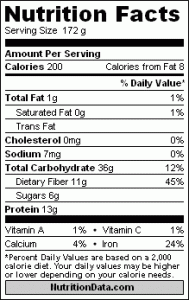 We’ve all had the experience, right? You’re at the grocery store on a Saturday morning. The aisles are crowded, and you’ve stopped to read the back of package of crackers to ascertain if they are really good for you. Only you can’t find the information you’re looking for, and you notice some strange items in the ingredient list. But you’re creating a traffic jam in the grocery aisle, so you give up and toss the box into your shopping cart.
We’ve all had the experience, right? You’re at the grocery store on a Saturday morning. The aisles are crowded, and you’ve stopped to read the back of package of crackers to ascertain if they are really good for you. Only you can’t find the information you’re looking for, and you notice some strange items in the ingredient list. But you’re creating a traffic jam in the grocery aisle, so you give up and toss the box into your shopping cart.
In fact, systematic reviews do find nutrition labels do provide useful information, and those who use them consume healthier diets.
But a new report by the federal Institute of Medicine has found that nutritional labels are far too confusing for the average consumer.
After a systematic review of the literature about how consumers make food choices, the IOM concludes “it is time for a fundamental shift in strategy, a move away from systems that mostly provide nutrition information without clear guidance about its healthfulness, and toward one that encourages healthier food choices through simplicity, visual clarity, and the ability to convey meaning without written information.”
The idea is to create a point system where foods were assigned a number depending on how healthy they are. The higher the number, the healthier the food. This number would be displayed on the front of food packages, making it easier for consumers to make healthy choices.
And possibly reducing the frequency of grocery aisle traffic jams as well.



Speak Your Mind